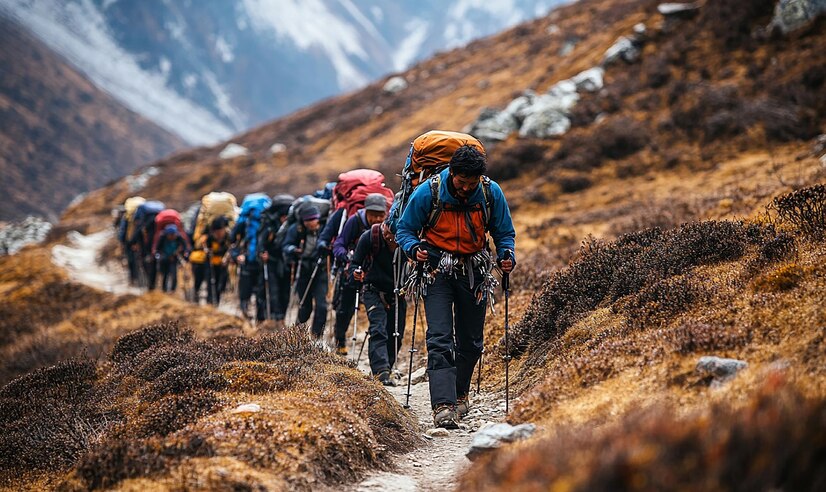Trekking in Nepal during the winter months (December to February) can be a magical experience, offering breathtaking views of snow-covered peaks and tranquil trails. However, the harsh weather and colder temperatures demand careful planning to ensure a safe and enjoyable journey.
Choose the Right Trek
Not all treks in Nepal are suitable for winter. Opt for lower-altitude trails such as the Ghorepani Poon Hill Trek, Annapurna Sanctuary Trek, or Langtang Valley Trek. These routes are less likely to be obstructed by heavy snow and still provide stunning mountain vistas. Avoid higher-altitude routes like the Everest Base Camp Trek or Thorong La Pass during peak winter unless you are an experienced trekker with proper gear.
.png)
Pack Smart
Winter trekking requires specialized gear. Layering is key—pack thermal base layers, fleece, and a down jacket. Don’t forget insulated gloves, a warm hat, waterproof hiking boots, and thick socks. A high-quality sleeping bag rated for sub-zero temperatures is essential. Carry trekking poles for stability on icy trails.
Monitor Weather Conditions
Winter weather in Nepal can be unpredictable. Sudden snowstorms and temperature drops are common. Keep an eye on weather forecasts and consult local guides before setting out. It’s always wise to have a buffer day or two in your schedule for any unforeseen delays.
Hire a Local Guide
A knowledgeable guide can be invaluable during winter treks. They can navigate challenging conditions, help in case of emergencies, and provide insights about the local culture and terrain. Guides are especially useful in regions where trails may be covered in snow.

Stay Hydrated and Fuelled
Dehydration is a common issue during winter treks, as the cold often masks thirst. Drink plenty of water and eat energy-rich foods to keep your body warm and energized. Avoid alcohol, as it can dehydrate you and lower your body temperature.
Prioritize Safety
Listen to your body and recognize signs of hypothermia or altitude sickness. Always inform someone about your trekking plans and expected return date. Carry a first-aid kit, a reliable map, and a fully charged power bank for emergencies.
By preparing adequately and trekking responsibly, you can enjoy the beauty of Nepal’s winter landscapes while ensuring your safety throughout the journey.
Picture Credit- Luxury Holiday Trek, Heaven Himalaya
Also Read